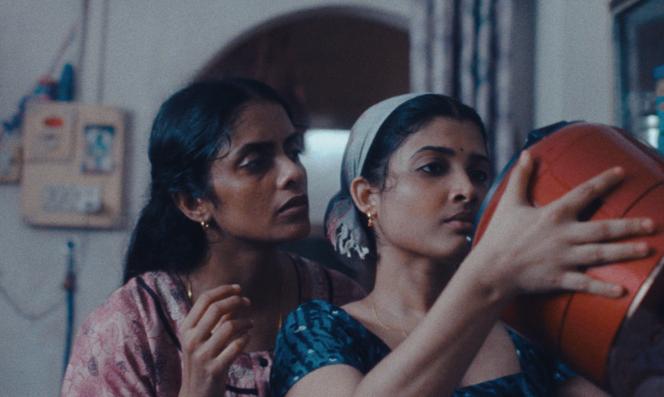


LE MONDE'S OPINION - NOT TO BE MISSED
Sometimes a film is a color. Like a director's signature or an abstract idea or mood that speaks for itself. In All We Imagine as Light, Payal Kapadia's second feature film, cyan blue and magenta red paint a halftone portrait of a city of light, Mumbai, India's commercial capital and the beating heart of "Bollywood." Migrants flock there every day, less to dream than to escape family traumas. Some voiceovers from real migrants make this clear from the very start.
We first discovered Kapadia's searing filmmaking at Cannes in 2021 at the Directors' Fortnight: A Night of Knowing Nothing, which explored loving, militant correspondence, blending a multitude of images on film of young people struggling against Narendra Modi's ultranationalist Hindu rule.
All We Imagine as Light is only superficially calmer: the grace with which the director films the metropolis as a falsely enchanted merry-go-round, revealing her heroines amid a crowd of anonymous people, is to be commended. The film begins before daybreak, exploring the city as it rises early. Camera movements fly over the stalls of a wholesale market, with its vendors lurking in the shadows at the foot of apartment buildings still half asleep.
In the distance, a horizontal band of lights highlights a moving train, a kind of aerial metro. On board, a woman in a blue sari stands, clinging to the rail as if she were spinning on a merry-go-round. We then see her at the hospital, where she works as a nurse. Her name is Prabha (Kani Kusruti) and she lives with Anu (Divya Prabha), who we discover a few floors down at reception spinning in her chair to relieve the boredom. A duty nurse, the stethoscope is her love horoscope, she uses it to listen to her heartbeat.
But when will Anu see Shiaz, the Muslim lover her parents will never accept? In one scene, the young nurse stealthily hands over a pack of contraceptive pills to a 24-year-old patient who already has three children and doesn't want any more. She adds that the state offers a bucket and 1,000 rupees, around €10, to men who undergo vasectomies – surgical procedures that render them sterile. The third protagonist, Parvaty (Chhaya Kadam), is the cook at the same hospital and the old building in which she lives is threatened with destruction.
While the film manipulates non-fiction, it also captures India's two unique seasons, "the monsoon and the non-monsoon," as the filmmaker is accustomed to say. In Mumbai, the torrential rains mark the arrival of the plastic sheeting used to protect goods, which can be seen everywhere – in front of stores and on building terraces, like electric-blue fireflies lighting up the night in a satiny digital grain that mimics film. A great colorist, Kapadia's dizzying shots show a city gleaming with light and sweat, which beads on foreheads – an opportunity for other micro-illuminations.
You have 22.8% of this article left to read. The rest is for subscribers only.
